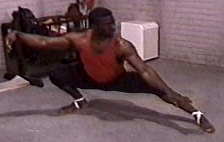What is physical movement? It is going to the cupboard to get that healthy snack. It is that fidgetiness that children exhibit in church, much often to their parent’s dismay. It is lifting that bale of hay onto the back of a trailer. It is break from sitting that one is internally prompted to regularly indulge. Movement is all of these things. Movement can be defined as 1) an act of changing physical location or position or of having this changed or 2) the act, process, result or a particular manner or style of repositioning or relocating. This is particularly important for the human body. Exercise is a small part of the of the designed need for movement of the human body.

How often does one arise from a sitting position? Four times?? Eight times?? Zero times?? Extended periods of sitting can adversely affect one’s health. Guidelines state that standing and stretch breaks are (to be) taken when sitting is obligatory. The posterior chain and postural integrity are greatly compromised by extensive periods of sitting. Making movement part of one’s daily routine can serve to counteract the ill-effects of sitting
Most physical movement can be of benefit to the body. It does not have to be extreme as much as it must be done consistently. Attention to good mechanics, engaging the core, and maintaining good posture will help with the undertaking of regular tasks. Washing the dishes, cleaning the house, working in the yard, home improvement, etc are all tasks that count toward acquisition of movement. They can be done at an individual’s own pace. Thus, one can easily participate in them. Be conscious of the quality of the movement.

Children move naturally. They are full of energy and are gifted with abandon when it comes to playful release. They sometimes have to be ‘reeled in’; they will, many times, play until they are tired. Necessities in life arise and they must be addressed: the need to eat, the need to get dressed for school, the need to be in (adult) situations that are absolved of play. Regardless, children will naturally move. A little youthful abandon is good for the body, mind and soul.
Opportunity for movement comes with the territory of a manual-type of job. Depending on the of the job, the activity can be mild or intense, intermittent or constant. Accomplishing tasks in this environment has the added benefit of burning calories. Attention to body position and action of the core will serve to enhance the movements being executed. Job related movement can be repetitive and tend toward one-sidedness. The individual must take care to ‘balance out’ their body.
There are movement activities arising from exercise. Many people do not have a regular exercise regimen. Of those that do exercise regularly, the routine is the predominant source of their movement activity. This is not optimal for health and wellness, especially if one sits s down all day for their job. This statement is not meant to imply that exercising is bad or useless. However, movement is best approached from an all-encompassing standpoint. Take any, and all opportunities at hand to engage in movement.

Be active. Move more. If your typical day consist of sitting, find ways in which activity can be incorporated into your routine. If your job is more manual, find ways to balance out the repetitive motion. Be more youthful, it will help your outlook and your health.
To bring more movement into your lifestyle, contact the trainers at Ab-Sutra Wellness and Fitness. In the North Austin Area.
Physical activity is defined as movement of the body that uses energy. Walking, gardening, briskly pushing a baby stroller, climbing the stairs, playing soccer, or dancing the night away are all good examples of being active. Physical activity should be of moderate or vigorous intensity for receiving health benefits.
Moderate physical activities include:
- Walking briskly (about 3½ miles per hour)
- Bicycling (less than 10 miles per hour)
- General gardening (raking, trimming shrubs)
- Dancing
- Golf (walking and carrying clubs)
- Water aerobics
- Canoeing
- Tennis (doubles)
Vigorous physical activities include:
- Running/jogging (5 miles per hour)
- Walking very fast (4½ miles per hour)b
- Bicycling (more than 10 miles per hour)
- Heavy yard work, such as chopping wood
- Swimming (freestyle laps)
- Aerobics
- Basketball (competitive)
- Tennis (singles)
You can choose moderate or vigorous intensity activities, or a mix of both each week. Activities can be considered vigorous, moderate, or light in intensity. This depends on the extent to which they make you breathe harder and your heart beat faster.

